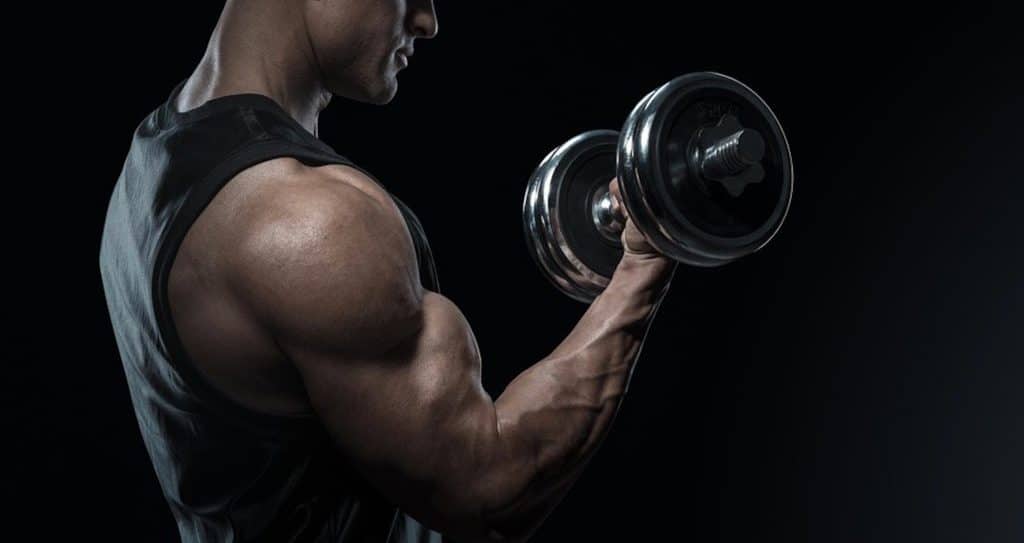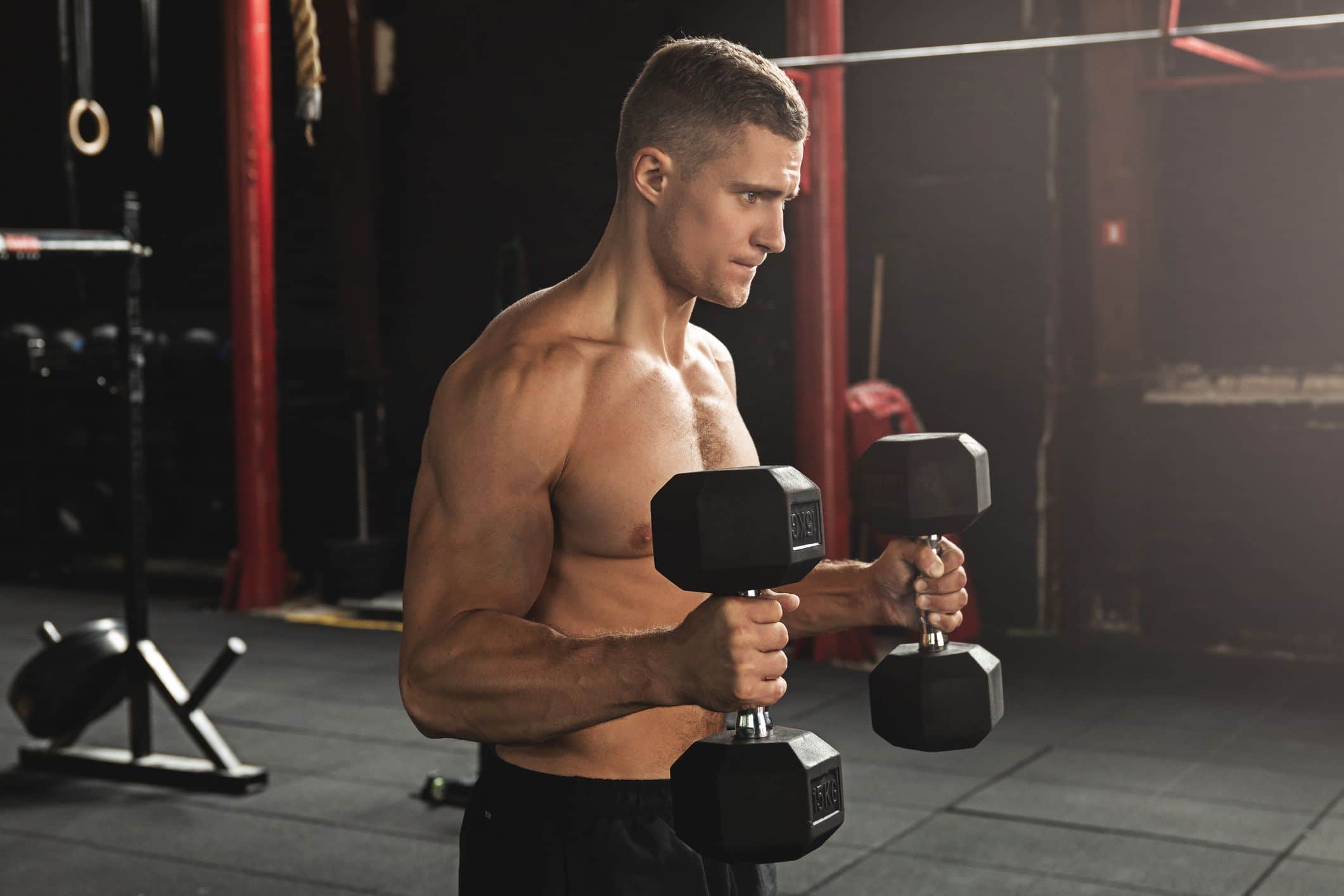Alternating dumbbell curls will help strengthen your weaker arm.
Performing dumbbell curls is an excellent method for developing robust biceps and enhancing overall arm strength. However, incorporating alternating dumbbell curls allows you to increase the weight used during your curls, leading to substantial improvements in the quality of your repetitions. Embracing this technique optimizes your workout routine and facilitates greater muscular strength gains.
Another name for alternating dumbbell curls is bicep curls; some professionals call them arm curls too. As a bodybuilder or athlete, these curls help you grow your forearms, which is also essential. So with these, you not only improve the strength of your hands but also work on the proportionality of your physique.
Apart from strength and improvements to the overall look of your arms, alternating dumbbell curls offer more. In this article, we take a close look at this routine and how to do it in the proper form to maximize your gains. We also discuss alternatives for building your biceps and improving your arm strength.
Alternating Dumbbell Curls Technique and Muscles Worked
Alternating dumbbell curls are done with the aid of dumbbells using one arm at a time. This offers many benefits for your stability and growth compared to bilateral curling. This isolation exercise primarily targets your biceps brachii but also recruits your brachialis and some of your arm flexors to an extent (1).
Doing alternating dumbbell curls with proper form can be challenging if you aren’t paying attention. For example, letting momentum take over during this routine could take the focus away from your biceps. Here’s a step-by-step guide highlighting details to remember when doing alternating dumbbell curls.
- Grab a set of dumbbells and stand straight with the dumbbells by your side. Keep your palms facing up; the dumbbells should not touch your body.
- Lift the weights slightly and keep your biceps tensed. This is your starting position.
- Curl the dumbbell up as far as possible while keeping your elbows pinned against your torso, starting with your weakest arm. (For most people, this is their left arm.)
- Squeeze your biceps when you get to the top of the exercise.
- Slowly lower the dumbbell back to starting position, ensuring you’re always in control.
- Repeat this movement for your other arm to complete the rep.
Note: Keeping the tension on your biceps throughout this movement will help you maximize gains. So don’t let the weights hang down when you’re at the bottom of the exercise. And avoid swinging to curl the weight.
Alternating Dumbbell Curls Benefits
Alternating dumbbell curls offer many benefits, making them an invaluable addition to your workouts. Let’s dive into those below.
Bigger and Stronger Biceps
Working on each arm individually helps strengthen your weaker arm and improve your form. Alternating curls enable you to lift more weight, leading to muscle hypertrophy.
Stronger Grip
The alternating dumbbell curl helps to make your grip stronger. When doing this exercise, rotating the curls between each arm lets you hold the dumbbells in each hand for a long time to improve your grip. You can also wrap fat grips around the dumbbell to increase grip strength.
Better Coordination and Fix Imbalances
As a result of bracing and holding your contraction for each arm, your coordination improves. Also, rotating curls between each arm can help you fix muscle imbalances.
Functional Fitness
Alternating dumbbell curls help build stronger biceps, aiding real-life activities like lifting heavy boxes. In addition, exercises like chin up and barbell rows that rely on your biceps and elbow flexion will benefit when you strengthen your biceps with alternating dumbbell curls.
Variety
Regular dumbbell curls are great for your biceps, but doing only those could lead to a plateau. Introducing alternating dumbbell curls help you work on the same muscles while spicing things up. This can help you avoid the monotony that leads to a plateau (2).
Alternating Dumbell Curls Alternatives
Speaking of variety, here are other alternating routines to build your biceps.
Alternating Dumbbell Hammer Curls
Alternating dumbbell hammer curls work on your biceps, but recruit brachioradialis and brachialis better. Dumbbell hammer curls differ because you use a neutral grip that reduces your biceps brachii’s activation. A neutral grip lets you lift heavier weights, strengthening your biceps muscles. Give dumbbell hammer curls a try!
Alternating Bicep Cable Curls
Alternating bicep cable curls are another variation you can do but this time with a cable machine and a stirrup attachment. The cable machine keeps constant tension throughout, which is great for muscle stimulation.
Alternating Kettlebell Curls
Kettlebells are easier on the wrist for some people so that they can lift better. Plus, they give your biceps a new angle for curling weight. Following the same steps, you can do your alternating curls with kettlebells in each hand.
Alternating Banded Bicep Curls
You can try alternating curls with resistance bands. Like cable curls, this one will also keep constant tension throughout. Doing this movement with higher reps is best to increase blood flow for an arm pump.
FAQs
What does alternating dumbbell curls work?
Alternating dumbbell curls work your biceps brachii primarily. As a result, they’re great for building bigger arms. Other elbow flexors like your brachialis also get recruited to a small extent.
Are alternating dumbbell curls better?
Alternating dumbbell curls allow you to lift more weight and work on muscle imbalances which could be better than bilateral dumbbell curls. You also get a greater contraction when doing each arm individually, which works your biceps more.
Are alternating bicep curls effective?
Alternating bicep curls is an effective way to build your biceps and improve grip strength. Rotating between curling the dumbbells one arm at a time will correct arm muscle imbalances.
Follow us on Instagram, Facebook, and Twitter for more workout guides!
References
- Marcolin, G., Panizzolo, F. A., Petrone, N., Moro, T., Grigoletto, D., Piccolo, D., & Paoli, A. (2018). Differences in electromyographic activity of biceps brachii and brachioradialis while performing three variants of curl. PeerJ, 6, e5165. https://doi.org/10.7717/peerj.5165
- Krzysztofik, M., Wilk, M., Wojdała, G., & Gołaś, A. (2019). Maximizing Muscle Hypertrophy: A Systematic Review of Advanced Resistance Training Techniques and Methods. International journal of environmental research and public health, 16(24), 4897. https://doi.org/10.3390/ijerph16244897









